
|
|
ENCYCLOPEDIA OF RADIO ELECTRONICS AND ELECTRICAL ENGINEERING Use of biogas technology application products. Encyclopedia of radio electronics and electrical engineering
Encyclopedia of radio electronics and electrical engineering / Alternative energy sources In the process of processing organic waste in biogas plants, two main products are obtained - biogas and digested biomass, which can be used in agriculture, industry and at home. Use of biogas The main way to use biogas is to turn it into a source of thermal, mechanical and electrical energy. However, large biogas plants can be used to create production facilities for the production of valuable chemical products for the national economy. Biogas can be used in gas-burning devices that generate energy that is used for heating, lighting, supplying feed preparation plants, for operating water heaters, gas stoves, infrared emitters and internal combustion engines. The simplest way is to burn biogas in gas burners, since gas can be supplied to them from gas tanks under low pressure, but it is more preferable to use biogas to produce mechanical and electrical energy. This will lead to the creation of its own energy base that provides for the operational needs of farms. Table 17 Biogas components
Gas-burners The basis of most household appliances in which biogas can be used is a burner. In most cases, atmospheric type burners are preferred, operating on biogas premixed with air. Gas consumption by burners is difficult to calculate in advance, so the design and adjustment of burners must be determined experimentally for each individual case. Compared to other gases, biogas requires less air to ignite. Consequently, conventional gas appliances need wider nozzles for the passage of biogas. For complete combustion of 1 liter of biogas, about 5,7 liters of air are needed, while for butane - 30,9 liters and for propane - 23,8 liters. Modification and adaptation of standard burners is a matter of experimentation. In relation to the most common household appliances adapted for the use of butane and propane, it can be noted that butane and propane have a calorific value almost 3 times higher than biogas and give 2 times more flame. Converting burners to biogas always results in lower levels of appliance operation. Practical measures for burner modifications include:
Gas stoves
Before using a gas stove, the burners must be carefully adjusted to achieve:
Radiant heaters Radiant heaters are used in agriculture to achieve the right temperatures for rearing young animals such as piglets and chickens in confined spaces. The required temperature for piglets starts at 30-35°C in the first week and then slowly drops to 18-23°C at 4 and 5 weeks. As a rule, temperature control consists in raising or lowering the heater. Good ventilation is a must to prevent CO or CO concentration2. Therefore, the animals must be supervised at all times and the temperature checked at regular intervals. Heaters for piglets or chickens consume about 0,2 - 0,3 m3 of biogas per hour. Thermal radiation of heaters Radiant heaters implement infrared thermal radiation through a ceramic body, which is heated to a bright red state at temperatures of 900-1000°C by a flame. The heating capacity of a radiant heater is determined by multiplying the gas volume by the net calorific value, since 95% of the biogas energy is converted into heat. The output of thermal energy from small heaters is from 1,5 to 10 kW of thermal energy.
Fuse and air filter Radiant heaters using biogas must always be equipped with a fuse that cuts off the gas supply in the event of a drop in temperature, i.e. when the gas is not burned. Biogas consumption Household gas burners consume 0,2 - 0,45 m3 of biogas per hour, and industrial ones - from 1 to 3 m3 of biogas per hour. The required amount of biogas for cooking can be determined based on the time spent cooking daily. Table 18. Consumption of biogas for domestic needs
Biogas engines Biogas can be used as a fuel for automobile engines, and its efficiency in this case depends on the methane content and the presence of impurities. Both carburetor and diesel engines can run on methane. However, since biogas is a high octane fuel, it is more efficient to use it in diesel engines. To operate the engines, a large amount of biogas is required and the installation of additional devices on internal combustion engines that allow them to run on both gasoline and methane. Gas-electric generators Experience shows that it is economically feasible to use biogas in gas power generators, while burning 1 m3 of biogas makes it possible to generate from 1,6 to 2,3 kW of electricity. The efficiency of this use of biogas is increased by using the thermal energy generated during the cooling of the motor of the electric generator to heat the reactor of the biogas plant. Biogas cleaning To use biogas as a fuel for internal combustion engines, it is necessary to pre-clean the biogas from water, hydrogen sulfide and carbon dioxide. Moisture reduction
Biogas is saturated with moisture. Purification of biogas from moisture consists in its cooling. This is achieved by passing biogas through an underground pipe to condense moisture at lower temperatures. When the gas is reheated, the moisture content in it decreases significantly. This drying of the biogas is especially useful for the dry gas meters used, as they are bound to fill with moisture over time. Reducing the content of hydrogen sulfide Hydrogen sulfide, mixed in biogas with water, forms an acid that causes metal corrosion. This is a serious limitation on the use of biogas in water heaters and engines. The simplest and most economical way to remove hydrogen sulfide from biogas is dry cleaning in a special filter. As an absorber, a metal "sponge" is used, consisting of a mixture of iron oxide and wood shavings. With the help of 0,035 m3 of a metal sponge, 3,7 kg of sulfur can be extracted from biogas. If the content of hydrogen sulfide in biogas is 0,2%, then with this volume of a metal sponge, about 2500 m3 of gas can be purified from hydrogen sulfide. To regenerate the sponge, it must be held in the air for some time. The minimum cost of materials, the ease of operation of the filter and the regeneration of the absorber make this method a reliable means of protecting the gas tank, compressors and internal combustion engines from corrosion caused by prolonged exposure to hydrogen sulfide contained in biogas. Zinc oxide is also an effective absorbent of hydrogen sulfide, and this substance has additional advantages: it also absorbs organic sulfur compounds (carbonyl, mercaptan, etc.). Decrease in carbon dioxide content Reducing carbon dioxide content is a complex and expensive process. In principle, carbon dioxide can be separated by absorption into the milk of lime, but this practice produces large volumes of lime and is not suitable for use in high volume systems. Carbon dioxide itself is a valuable product that can be used in various industries. Use of methane Modern research by chemists opens up great opportunities for using gas - methane, for the production of soot (a dye and raw material for the rubber industry), acetylene, formaldehyde, methyl and ethyl alcohol, methylene, chloroform, benzene and other valuable chemical products on the basis of large biogas plants. Biogas consumption by engines
In with. Petrovka, Chui region of the Kyrgyz Republic, the biogas plant of the Association "Farmer" with a volume of 150 m3 provides biogas for household needs of 7 peasant farms, the operation of a gas-electric generator and 2 cars - UAZ and ZIL. To operate on biogas, the engines were equipped with special devices, and the vehicles were equipped with steel cylinders for gas injection.
The average values of biogas consumption for the production of 1 kW of electricity by the engines of the Farmer Association are about 0,6 m3 per hour. The use of biogas as a motor fuel in the village. Petrovka
Biogas efficiency Biogas efficiency is 55% for gas stoves, 24% for internal combustion engines. The most efficient way to use biogas is as a combination of heat and power, where 88% efficiency can be achieved18. The use of biogas for the operation of gas burners in gas stoves, heating boilers, fodder steamers and greenhouses is the best use of biogas for farms in Kyrgyzstan. Surplus biogas In case of excess biogas produced by the plant, it is recommended not to release it into the atmosphere - this will lead to an adverse effect on the climate, but to burn it. To do this, a flare device is installed in the gas distribution system, which must be located at a safe distance from the buildings. Use of biofertilizers Organic waste processed in biogas plants is converted into biomass, which contains a significant amount of nutrients and can be used as biofertilizer and feed additives. The humus materials formed during fermentation improve the physical properties of the soil, and the mineral substances serve as a source of energy and nutrition for the activity of soil microorganisms, which helps to increase the absorption of nutrients by plants. The main advantage of biofertilizers is the preservation in an easily digestible form of almost all the nitrogen and other nutrients contained in the feedstock. A significant advantage of biofertilizers over naturally rotted manure is that when manure is fermented in biogas plants, a significant part of helminth eggs, pathogenic microorganisms and weed seeds contained in manure die. organic matter in fertilizers While nitrogen, potassium and phosphorus can be found in mineral fertilizers, there are no chemical substitutes for other constituents of biofertilizer from anaerobic digestion of manure in biogas plants, such as protein, cellulose, lignin, etc. Organic matter is the basis for the development of microorganisms responsible for converting nutrients into a form that can be easily absorbed by plants. Due to the decomposition and disintegration of the organic part of the raw material, the digested biosludge in an accessible form provides fast-acting nutrients that easily enter the soil, and are immediately ready for absorption by plants and soil microorganisms. Humic acid Important organic substances present in biofertilizers are humic acids. They increase the resistance of plants to adverse environmental conditions: drought, high and low temperatures, toxic substances (pesticides, herbicides, heavy metals), increased radiation. Humic acids help to accelerate the growth and development of plants, reduce the growing season, earlier (8-10 days) maturation and increase crop yields. The content of humic acids in biofertilizers ranges from 13% to 28% per dry matter, and their concentration depends on the temperature of the fermentation process of raw materials. Improvement of soil quality The content of humic acids in biofertilizer is especially important for low-humic soils in Kyrgyzstan. The use of biofertilizers leads to rapid humification of plant residues in soils, helps to reduce the level of erosion due to the formation of stable humus and increase the content of nutrients, improves hygroscopicity, increases the shock-absorbing and regenerating qualities of soils. It has also been observed that the activity of earthworms when using biofertilizers, compared with the use of simple manure, increases8. The use of biofertilizers on alkaline soils leads to soil neutralization and an increase in its moisture content, which is especially important for arid regions of Kyrgyzstan. The effectiveness of the impact of biofertilizers on plants The effectiveness of biofertilizer has been studied as a stimulator of germination energy, seed germination and the development of the root system and stems at various concentrations and terms of application by scientists and practitioners. Wheat Laboratory tests The addition of humic acids isolated from biofertilizer to the medium for wheat seed germination showed that they stimulate the elongation of the roots and stems of wheat grains of the Lada, Intensive and Bezostaya varieties, the greatest positive effect was obtained when using 1% and 0,01, XNUMX% solutions.
When conducting experiments to study the effect of biofertilizer on germination energy, seed germination and the development of stems and roots of wheat at different concentrations of the introduction of two types of biofertilizer at the Research Institute of Agriculture (NIIZ), the following results were obtained:
Field trials and practical results Field experiments to determine the effect of biofertilizers on wheat yields were carried out on the territory of the greenhouse farm of the Kyrgyz NIIZ with the Jamin wheat variety on a plot of 12 m2. Fertilizers were applied for pre-sowing tillage and top dressing. Soil cultivation, sowing and plant care were carried out in accordance with agrotechnical recommendations, no watering was carried out. When applying bio-fertilizers in the amount of 400 liters per hectare, 5,3 centners per hectare were obtained more, and when applying 800 liters per hectare - 2,2 centners per nectar more yield than without the use of biofertilizer (21,6 centners/ha) . Farm "Bakyt" Sokuluk district of Chui region received in 2004 60 centners of "Kyyal" wheat per hectare on a plot of 12 hectares, using bio-fertilizers diluted in a ratio of 1:50 - in the amount of 2 tons per hectare. In 2004, the Farmer Association decided to lease an unfavorable plot of land in order to demonstrate the effectiveness of biosludge as a fertilizer. On a plot of poor and stony soil measuring 14 hectares, abandoned due to low yields (7-10 centners per hectare), good results were obtained this year - 35 centners of Polovchanka wheat per hectare. Similar results were obtained on another plot of 6 hectares - 32,5 centners of wheat of the "Intensivnaya" variety were harvested from each hectare of barren soil. Fertilizers were applied in the pre-arable period in the amount of 3 tons per hectare and during irrigation in the amount of 1 ton per hectare.
Corn The use of biofertilizer in the cultivation of vegetable crops and corn for silage showed that when applying at the root, it is necessary to dilute the biofertilizer with water in the ratio of 1:20, 1:40, 1:50, depending on the content of humic acids in the fertilizer. Experiments conducted by the Latvian Agricultural Academy showed an increase in corn yield by 49%.
With a one-time pre-arable application of biofertilizers in the amount of 4 tons per ha, the Farmer Association registered an increase in the yield of corn for silage by 1,8 times. Barley Studies of the effect of biofertilizers on germination energy, seed germination, development of stems and roots of barley at various concentrations of biofertilizers were studied in laboratory experiments at the Kyrgyz Research Institute of Agriculture. The use of solutions of 0,01%, 0,1%, 1%, 3%, 6% concentrations slightly affect the germination of barley seeds, but the growth of roots increases at almost all concentrations of biofertilizer, especially at 3 - 6% concentrations of the solution, and the concentration of the solution 0,1% - gives a significant increase in stems (see Fig. 45). Tomatoes, potatoes and other tuberous vegetables When using biofertilizer, the yield of tomatoes and potatoes increased by 15 - 27% compared to the control variant. Biofertilizer growers have reported that the growing season of potatoes treated with liquid fertilizer before planting is reduced by about 2 weeks. At the same time, the yield increases by 1,5 - 2 times. The Latvian Agricultural Academy conducted experiments on potatoes, which showed an increase in yield by 11-35% when using biofertilizer. Crushed and fermented tomato tops in a bioreactor form detritohumin - a patented type of biofertilizer that allows growing tomatoes weighing 0,7-1,5 kilograms in the Chui Valley. Experiments conducted by researchers on different types of vegetable crops show that the most noticeable effect of the use of biofertilizers is manifested in tuberous vegetables (radishes, carrots, potatoes, etc.) and fruit trees. Recent experiments on the application of biofertilizers, conducted by the Kyrgyz Agrarian University with the support of the Japan International Cooperation Agency (JICA), yielded the following results: Experiment: For the experiment, a dose of biofertilizer was calculated, comparable to the NIOOPI20K90 standard, in accordance with the N norm and amounted to 16 t/ha in three repetitions.
An analysis of the potato crop showed that in relation to the yield with the use of mineral fertilizers - 27.9 t/ha, the yield with the application of biofertilizer reached 26.1 t/ha, which is 6.5% lower compared to the application of mineral fertilizers. Meanwhile, the yield of the control plot without fertilizers was 22.5 t/ha. However, the starch content when applying biofertilizer was 14.7%, which is 12% higher compared to applying mineral fertilizers (13.1%). Note: in Japan, the yield reaches 30t/ha, the starch content is 15-16%. Table 20. The effect of fertilizers on the quality indicators of potatoes,%
Sugar beet Field experiments to determine the effect of biofertilizers on the yield of sugar beet were carried out on the territory of the greenhouse farm of the Kyrgyz NIIZ with beet variety "K 70" on a plot of 30 m2. Fertilizers were applied for pre-sowing tillage and top dressing. Soil cultivation, sowing and plant care were carried out in accordance with agrotechnical recommendations, 8 irrigations were carried out. Harvesting was carried out manually, the roots were weighed from the entire accounting area of the plot. The increase from fertilization varies widely - from 21% (when applying 800 liters per ha) to 33% (when applying 400 liters of biofertilizers per ha) and depends on soil and climatic conditions, norms, terms and methods of fertilizing. The same experiment was carried out by KAU together with JICA on sugar beet. Experiment: Biofertilizer obtained as a result of manure processing in a biogas plant was applied at the rate of No. 120Р140К45 and in accordance with nitrogen standards three times (20 t/ha). Table 21. The effect of fertilizers on the yield of sugar beet roots
Table 22. The effect of fertilizers on the content of sucrose in sugar beet roots
When using biofertilizers, the harvest of root crops per hectare reaches 40.2 t/ha, while mineral fertilizers allow increasing the yield of root crops to 40.3 t/ha. Thus, biofertilizers are practically not inferior in their effectiveness to mineral fertilizers. Meanwhile, the yield of sugar beet root crops on this soil without fertilization amounted to 24.2 t/g. The content of sucrose in sugar beet roots is the highest when using biofertilizer - 16.9%, and mineral fertilizers reduce this figure to 15.4%. In Japan, the yield of sugar beet root crops is 50-55 t/ha, sugar content is 17%. Thus, studies on the effectiveness of biofertilizer have shown its positive effect on the growth and development of potatoes and sugar beets, contributing to a significant increase in the yield of these crops. Therefore, it can be expected that, based on the results of ongoing studies, biofertilizers will become an alternative to mineral springs in the future. Soy When conducting experiments on the effectiveness of the use of biofertilizer for soybeans in the Kyrgyz NIIZ, a good reaction of soybeans to a 3% solution of biofertilizers was noticed, germination occurred on the 2nd day of the experiment, and shoot formation was observed on the 5th day.
Cotton Field studies of the effect of biofertilizer on the yield of cotton in a private farm in the Bazar-Korgon district of the Jalal-Abad region showed that the use of a 10% solution of biofertilizers during sowing and during the first cultivation at the rate of 300 l/ha makes it possible to obtain a cotton yield of 30 centners/ha. The control plot using manure showed a yield of 20-25 c/ha, that is, the yield of cotton when using biofertilizers increases by 20% - 50%. Trees, shrubs and herbage Field studies conducted at the Institute of the Biosphere of the Southern Branch of the National Academy of Sciences of the Kyrgyz Republic showed that the use of biofertilizers for the formation of the root system of cuttings of various fruit, ornamental and other trees and shrubs is more effective than the use of the traditional expensive chemical heteroauxin. Practice has shown that the use of biofertilizer for growing natural herbage on mountain-meadow soils with two cuts gives an increase in green mass by 21%. In the Latvian state farm "Ogre", the use of bio-fertilizer on grasses after 3 cuttings showed an increase in yield by S times, and on cultivated grasses after 4 cuttings by 1,5 times. Application of biofertilizers Terms and rates of biofertilizer application Processed raw materials are most effective when applied to the fields shortly before the growing season. Additional application of biofertilizers during plant growth is possible. The amount and time of application required depends on the particular plant. For hygiene reasons, the leaves of plants used for food should not be foliarly fertilized. The following are recommendations for the efficient use of biofertilizers:
feed additive Biofertilizers are used worldwide as active additives to improve the efficiency of animal feed. In the process of anaerobic processing of raw materials, biofertilizers are decontaminated from all types of pathogenic microflora, especially when using the thermophilic regime. Moreover, the processed biomass acquires new properties that are positive in terms of fodder production - the concentration of protein in it increases, it is enriched with vitamin B12 and other useful substances. Industrial production of protein and vitamin supplements based on agricultural waste fermented in biogas plants is developed in Israel, the Philippines, Canada, and the USA, where the average cost of such supplements is $12 per 1 ton. Animal health and feed composition The normal activity of the animal organism is possible with the regular intake of food containing nutrients: fats, proteins, carbohydrates, as well as mineral salts, water and vitamins. Nutrients are a source of energy that covers the expenses of the body and a building material that is used in the process of growth of the body. Proteins occupy a special place among the nutrients needed by animals, as they cannot be replaced by any other food substances. With an insufficient amount of proteins, the normal growth of the body is suspended. Complete proteins are predominantly proteins of animal origin, but some plants (potatoes, legumes, etc.) contain complete proteins. Vitamins play the role of metabolism regulators. Currently, more than 20 vitamins necessary for the animal body have been isolated and studied. Vitamin B12 plays a special role for animals. Vitamin B-12 deficiency can cause dysplasia, impaired digestibility (particularly of protein), anemia (dryness in ruminants), stiff hair, and skin inflammation. In poultry, insufficient intake of vitamin B-12 leads to increased mortality of embryos and hatched chicks. In the event of a long-term deficiency of this vitamin, egg production may also deteriorate. Thus, from the point of view of animal husbandry, feed should contain the necessary basic elements in a form digestible by animals, a set of microelements, have a certain amount of complete protein, and also contain vitamins. The need for feed additives Natural feeds often do not meet the requirements for the content of substances necessary for animals. Vegetable feed, as a rule, cannot cover the needs of animals for protein and vitamins. Therefore, feed additives are added to animal feed - fish, meat and bone meal, soybean meal. Biofertilizer as a feed additive Manure processed in biogas plants can be used as feed additives, as it contains all the essential amino acids and many vitamins, especially B vitamins, and is decontaminated during processing and further preparation. The total amount of amino acids in 1 kg of dry matter of anaerobically processed cattle manure is 210 and 240 g/kg, respectively, in the mesophilic and thermophilic processing modes. Therefore, the product of anaerobic processing of excrement of farm animals is an important source of protein feed. Feed additive preparation The technology for obtaining feed concentrate was developed and recommended for use by the Russian Institute of Biochemistry. A.N. Bach, as well as the Ukrainian Research Institute of the alcohol industry. It consists in processing manure in a biogas plant, separating coarse residues (straw, etc.) from the processed mass and dehydrating the biofertilizer sludge. The resulting precipitate is dried at a temperature of 60 - 70°C and crushed into flour. When stored in light-tight packaging or containers, it retains its qualities for a long time. Up to 1 tons of feed concentrate containing 0,3 g of pure vitamin B-30 can be obtained from 12 cattle using this technology per year. This amount of concentrate can enrich more than 1000 tons of feed19. Dose of feed additive According to the recommendations of the UkrNIIselkhoz, the average rate of forage enrichment is 10-20 µg of vitamin B-12 per 1 kg of dry matter of the feed. To be more reliable, it is recommended to add 2,5 grams of dry vitamin concentrate to animal feed per kilogram of feed dry matter18. Animal feeding effect Studies on the use of the product of anaerobic manure processing as protein-vitamin feed additives were studied in scientific institutions in Latvia, Armenia, Ukraine and in foreign countries. In studies at the state farm "Ogre", Latvia, dry vitamin concentrate from biofertilizers was added to the diet of bulls as an additive (10 grams per kilogram of live weight). The result was an increase in the weight gain of animals up to 20%, the total volume of consumption of dry food by animals was reduced by 6-14%, and the health of animals improved. Storage of biofertilizers In order to preserve the fertilizing properties of the processed raw material, i.e. the nitrogen content, it can be stored for a short time in a closed container and then must be applied to the fields. It is better if, after applying biofertilizers, the land is plowed or dug up. Storage of biofertilizers is usually carried out in one of the following forms:
Liquid storage The outlet of the biogas system leads directly to the bio-fertilizer storage tank. Fluid loss due to evaporation or seepage must be prevented. Before applying fertilizer to the fields, the contents of the container are mixed and then applied using a spreader or through an irrigation system. The main advantage of this method is low losses of nitrogen. On the other hand, capacity requires a large capital investment. Also, when storing liquid fertilizer, it becomes necessary to purchase vehicles for its delivery to the fields. The amount of work also depends on the distance over which the fertilizer must be transported. Drying Drying of biofertilizer is possible in dry and hot weather. The main advantage of dried biofertilizer is the reduced volume and weight of the fertilizer. Dried fertilizer can also be distributed manually. The cost of building small drying tanks is relatively low, but the fertilizer loses about 90% of inorganic nitrogen, which is about 50% of the total nitrogen content. In industrialized countries, processed raw materials are usually separated using a separator and filters into liquid and thick parts. The liquid part is then returned back to the reactor or used as fertilizer, while the thick part is dried or composted. As a simple technology for separating the liquid and thick parts of biofertilizers, the use of slow sand filters can be recommended. The wet thick mass can be spread into shallow pits or simply laid out on a surface to dry. Depending on the climate, large areas are sometimes needed for such drying. Drying time and loss of nutrients can be reduced by mixing thick mass with dry substances. The disadvantage of all drying methods is the loss of nutrients. Therefore, drying is recommended only when transporting liquid fertilizers is difficult. Composting Nitrogen losses can be reduced by mixing recycled materials with vegetable waste during composting. Biofertilizer contains nitrogen, phosphorus and other useful substances and accelerates the process of decay in composts. Moreover, the high temperature of composting kills the pathogenic microflora that survived in the reactor. Finished compost is moist, soft, and can be applied to fields with simple implements. It is easier to deliver to the fields. Dry plant material is stacked in layers and watered with recycled biosludge. The ratio of plant material to the amount of thick effluent depends on the solids content of the plant material and sludge. The main advantage of composting is the reduction of nutrient losses from biofertilizers compared to drying. Compost produced with the addition of bio-fertilizers is very efficient and gives long-term results. Equipment for applying biofertilizers Application technologies for biofertilizers range from manual application to large systems using computers on board the fertilizer spreader. The choice of technology depends on the amount of effluent and the area of land that needs to be fertilized, as well as on financial capabilities and labor costs.
On small farms in developing countries, buckets, watering cans, containers with straps, wooden closed carts, simple carts, etc. are used to apply biofertilizers. The most economical way to apply biofertilizers is by using a network of canals or by adding biofertilizers to the irrigation system. Both options assume a slope from the fertilizer storage area of 1% for an irrigation system or 2% for a ditch system. Using fertilizer in the best and least labor intensive way is an important planning parameter. In areas where the topography allows fertilization by gravity, special attention must be paid to the correct location of the biogas plant. In flat areas, you can consider raising the installation and truss to a higher level. Application with a liquid fertilizer spreader The spreader tank is filled from storage and then transported to the field for fertilizer distribution. The fertilizer is sprayed through the holes onto the reflective plate, which, thanks to its special shape, expands the coverage of the spray. Alternatively, the reflective plate can be rotated. Direct application via moving hose system The biofertilizer is pumped into a distribution system that feeds several hoses that run close to the ground. Fertilizer is applied directly to the ground, reducing nutrient loss. Hose spacing can be adjusted for different crops. Injection with discs The earth is opened by means of 2 discs into v-shaped troughs, into which the fertilizer flows through the hoses. The grooves are then closed. This is the most advanced method of applying biofertilizers in terms of nutrient retention.
With the support of the Japan International Cooperation Agency (JICA), 2 types of liquid biofertilizer spreader (LBR) were developed: LBR on the soil surface and LBR directly into the soil. On the experimental fields of the KNAU Educational Farm, these spreaders passed preliminary experimental tests using biofertilizer, during which their practical performance was confirmed. At present, work continues on improving the design of the working body (eliminating clogging of nozzles, expanding the spreading coverage area, etc.) of the spreaders. Authors: Vedenev A.G., Vedeneva T.A.
Alcohol content of warm beer
07.05.2024 Major risk factor for gambling addiction
07.05.2024 Traffic noise delays the growth of chicks
06.05.2024
▪ Antifreeze found in blood of Antarctic fish ▪ Universal power controller for mobile applications ▪ Logitech Wireless DJ Music System ▪ Waterproof DVD player from Green House
▪ site section Tone and volume controls. Article selection ▪ article After all, if the stars are lit, it means that someone needs it? Popular expression ▪ article What is the upper temperature limit at which microorganisms can live? Detailed answer
Home page | Library | Articles | Website map | Site Reviews www.diagram.com.ua |






 Arabic
Arabic Bengali
Bengali Chinese
Chinese English
English French
French German
German Hebrew
Hebrew Hindi
Hindi Italian
Italian Japanese
Japanese Korean
Korean Malay
Malay Polish
Polish Portuguese
Portuguese Spanish
Spanish Turkish
Turkish Ukrainian
Ukrainian Vietnamese
Vietnamese


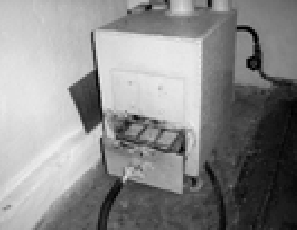


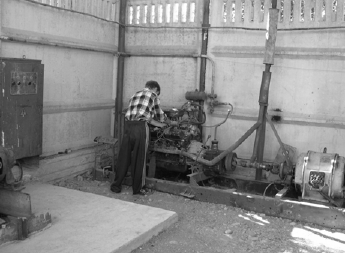

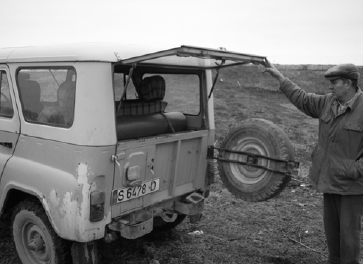




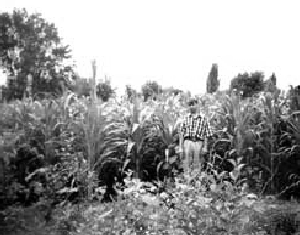
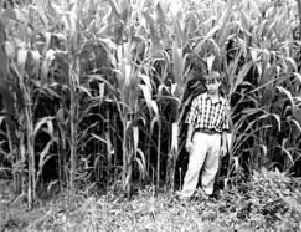
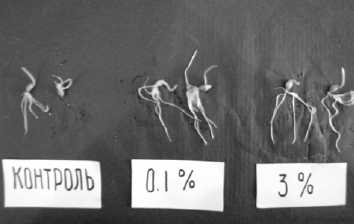




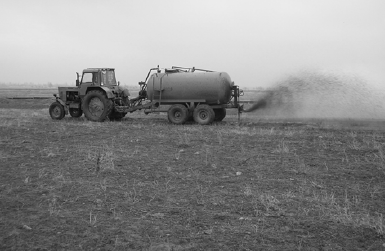
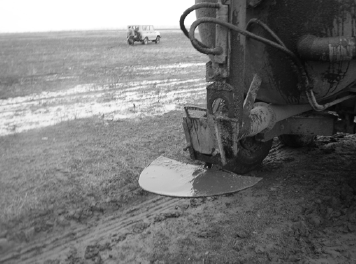



 Leave your comment on this article:
Leave your comment on this article: